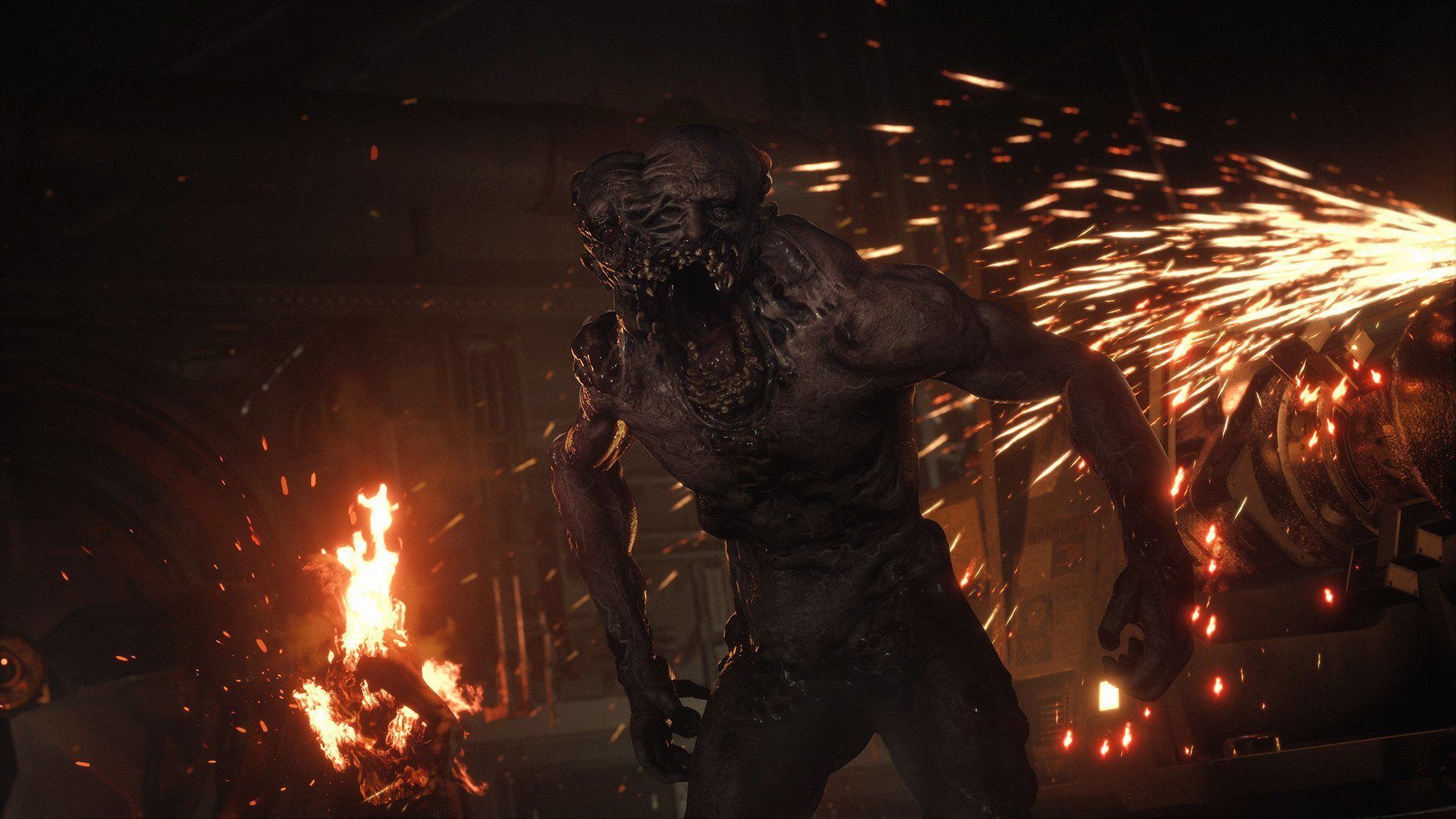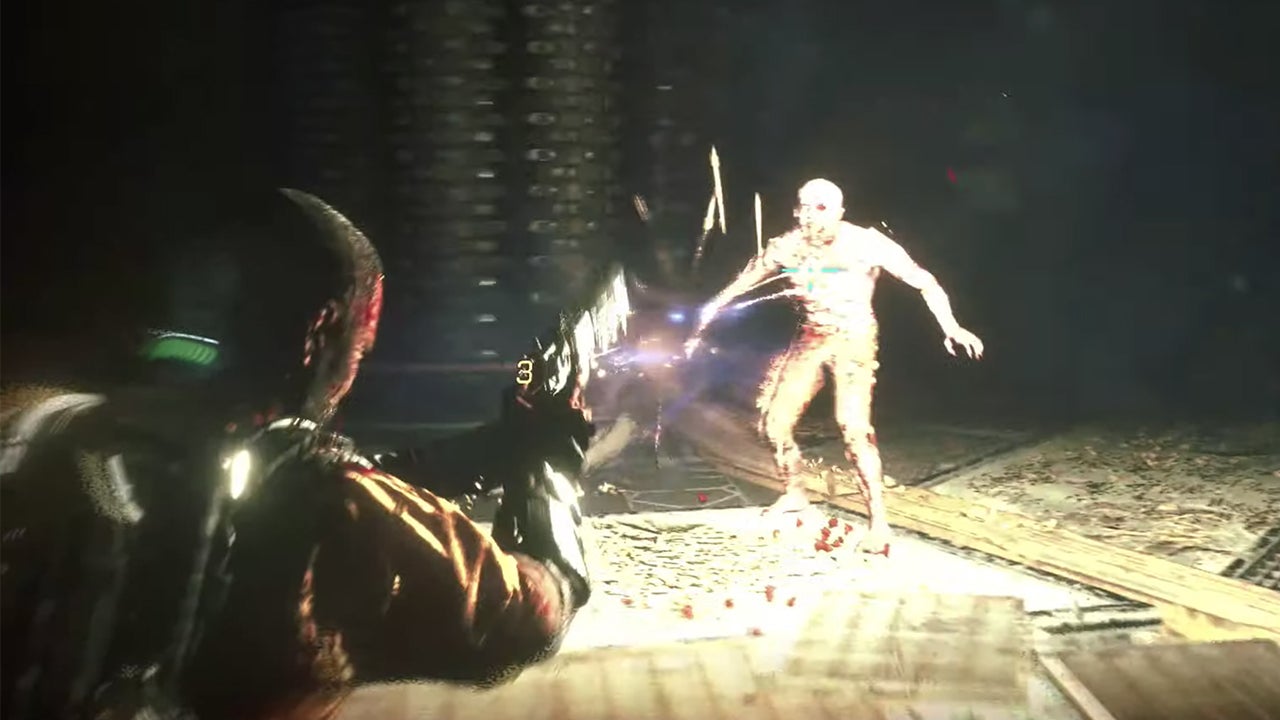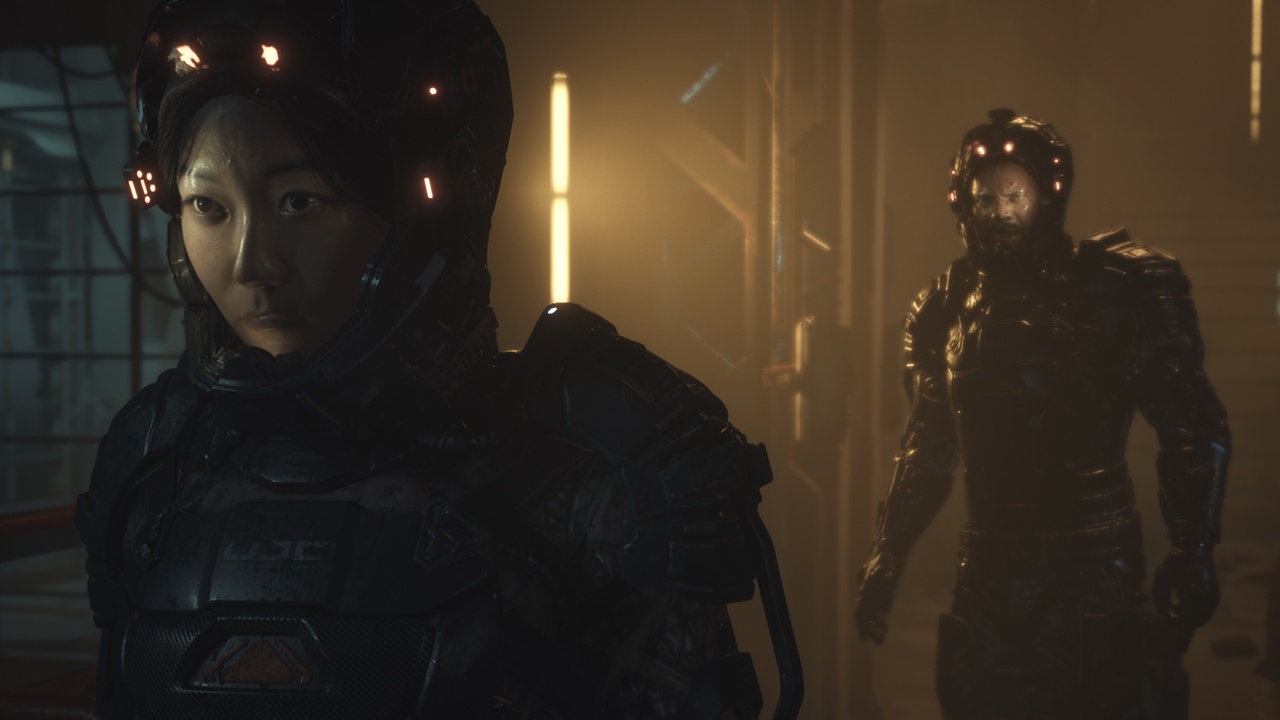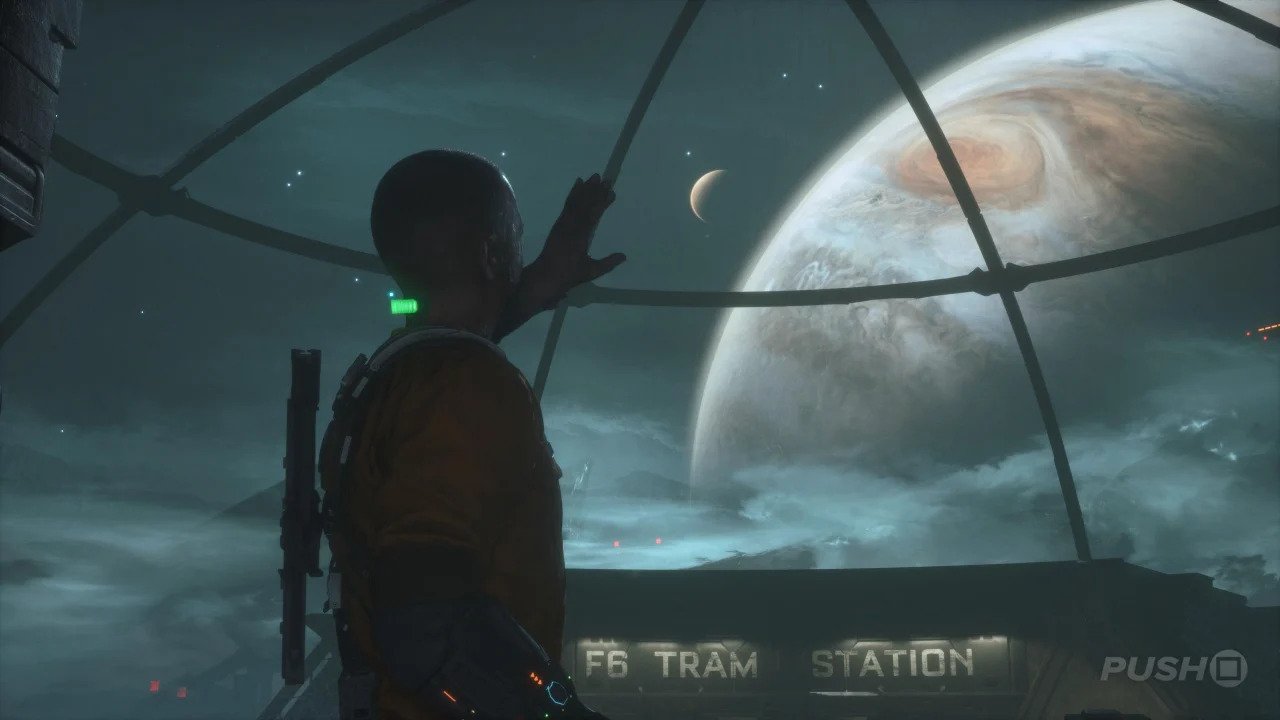Title – The Callisto Protocol
Platforms – PS5, PS4, Xbox Series X/S, Xbox One and PC
Release Date – December 2nd, 2022
Developer – Striking Distance Studios
Publisher – Krafton
MSRP – $59.99
ESRB – M for Mature
Disclaimer – This product is being reviewed on the PlayStation 5. A review copy was provided by Krafton Industries for the purpose of this review. This review may also contain spoilers for certain gameplay and story elements. Watch at your own risk, you have been warned. Gaming Instincts is an Amazon Affiliate and does gain financial benefits if you choose to purchase this product on this page.
The disposition that gamers salivate over unnecessary brutality is not enough to make The Callisto Protocol the next defining space horror game. As a teenager, I believed a game with blood and cursing was the mark of maturity, but the video game industry has grown with me. Today, maturity is emotional depth and intricate character growth, not just violence for violence’s sake. The Callisto Protocol is a game for the teenage version of me. It harkens to the past, contrasted with complex and nuanced Triple-A single-player games.
The Callisto Protocol is rough around the edges, especially from a combat perspective. It’s also pretty unsophisticated by today’s standards, but it’s a decent, dare I say mediocre, linear adventure if you’re looking for a straightforward story with simplified game design.
Predictable and Unoriginal – Story
On a fateful freight transportation job, Jacob Lee, his copilot, and his ship crash onto the planet Callisto. Within hours of the crash landing, Jacob is treated like a prisoner and taken to Black Iron prison. However, when an outbreak derails security and invites chaos, Jacob takes the opportunity to escape. As the story unfolds, Jacob learns more about the outbreak and his role in the deadly virus that mutates people into mangled monsters.
Overall, the story suffers from unoriginality and predictability. While the music and presentation make you think there are jaw-dropping twists, I often saw them coming a mile away. Furthermore, the storytelling moves at a strange pace, where everything is explained in the last 40 minutes. It’s like watching a two-hour movie where any significant story development happens in the final act. The biggest crime, though, is the unoriginality of the outbreak’s origins and the lack of depth or significant explanation for its occurrence. Unfortunately, the small cast of three characters gets the same attention.
Although Jacob is well-played by Hollywood actor Josh Duhamel, he doesn’t have much of a personality. One time, he saw a guard screaming in agony only for an agile, four-legged creature to pull him into the air and tear him to pieces. Blood rained down splashing all over the floor, and Jacob doesn’t react for a few seconds, then calmly says without fear and shock: “what the hell was that?” Even though he does get some urgency towards the end, Jacob is mostly a bland character without much depth or intricacy and only some slight, ill-explained character changes. The same holds true for the other two characters, Elias and Dani. The former was a fellow prisoner at Black Iron who helped Jacob navigate the prison. His role is to tell Jacob what to do and where to go. Throughout the game, he only has a few lines that help me understand him as a character. Besides that, he is akin to an NPC giving tasks despite being treated as a significant character. The most interesting of the bunch is Dani. She is angry with Jacob, and the mystery of that antagonism keeps the plot moving forward. Still, I never really liked her or got to know her character well.
Ok. The story is not that impressive. It’s another reminder that The Callisto Protocol adheres to an older, less mature style of video game storytelling, ultimately serving as mere set dressing for the gameplay itself.
Dodging Never Felt Worse – Gameplay
The Callisto Protocol is a strictly linear game without any embellishment. There are eight chapters of gameplay without collectibles, side content, or optional areas to explore, which compounds to about nine hours of gameplay. Usually, I’m a staunch advocate for linear video games, but Callisto doesn’t have the content or the length to justify its $70 launch price. It’s so barebones that there isn’t a chapter selection for replayability or a new game-plus option.
With that said, the game starts strong and fast as you control Jacob while his ship is plummeting to the planet below. Here, we get a taste of one of the more cinematic moments that occurs a few more times throughout the game. Due to unforeseen circumstances, the back of the ship opens, pulling everything inside into cold, vast space. As Jacob, you must crawl to the safety of the cockpit. It’s exhilarating, but, in reality, all you do is press up on the analog stick and occasionally move to the side to avoid bursts of fire. Later on, Jacob gets caught up in a stream of water and must move to the left or right to avoid obstacles. I’m a sucker for moments like these, even if they are glorified cutscenes, especially since they add excitement to a repetitive combat loop.
Once the crash is over, Jacob finds himself locked up in prison on the Callisto planet. The plot moves at a breakneck pace, quickly getting players to the point of exploring the dark and eerie corridors. After one night at the prison, everything turns to hell. Inmates are running in every direction, fires are consuming the building, and mutilated monsters are running around tearing limbs off guards and inmates alike. The intro is one of my favorite parts of the game. The sheer chaos and spectacle capture the intensity of the moment, in stark contrast to the lonely nature of the game. After this amazing intro, we get into the gameplay loop.
You’ll spend most of your time walking through dark corridors and fighting mutated beings called Biophages. Almost every combat encounter will involve melee, the game’s most distinctive mechanic and the one with the biggest learning curve. At its most basic, you click the trigger to swing your electrified baton and move the left analog stick left and right to weave like a professional boxer. Moving the stick twice to the left or twice to the right will break your dodge and you must execute the movement right before the enemy swings. It takes some getting used to and can be satisfying when pulled off. However, there are some fundamental flaws in the melee system that quickly surface and give way to frustration.
A lot of this comes down to the tight and shaky camera during combat, making it difficult to see exactly when the enemy will attack. Without any visual indication, it’s challenging to know when to dodge. Additionally, the camera focuses on one enemy at a time. However, the game will throw several enemies at you, letting Biophages beyond your field of view rear up to attack. Jacob does get a handgun, but most combat encounters will resort to melee at some point, exacerbating the annoying mechanic. One cool thing about the gun is its easy integration with melee. At a certain point during a melee encounter, a reticle will appear on the enemy indicating an appropriate time to get a quick shot off. Contrary to the dodge mechanic, integrated gunplay is easy to pull off and you feel cool every time you do it.
The last pillar of combat is the GRP glove. This allows you to lift snarling enemies from a distance and pull them to you for a melee attack, or push them back with formidable force. The GRP’s energy dwindles fast and that’s clearly by design since its excessive use would surely cheapen the experience. It’s so easy to kill a Biophage with the GRP by either throwing them off the map or into a massive fan. The environment takedowns via the GRP are the highlight of what is otherwise mundane and/or annoying combat. This prison contains an excessive amount of large industrial fans and spinning death traps that will instantly kill you and any Biophage. Traditionally, these creatures are bullet sponges but one throw into a fan will decimate them to a bloody pulp. One hallway had a spinning deathtrap that rolled across the floor and I held a Biophage in the air and waited for the spikes to meet their victim. Ironically, the terrible dodge mechanic makes it all the more satisfying when you can skip past the melee charade and kill your enemies instantly with a fan.
Still, combat can get pretty mundane and repetitive as the game wears on since there is limited variation in tactics. Almost every encounter will entail the same dodge, melee, and shoot pattern with the same three or four enemy types. There are a few different weapons to craft, such as a shotgun and an assault rifle. However, crafting is extremely limited and doesn’t alter gameplay in significant ways. Some guns have alternative firing modes, such as exploding bullets, that don’t necessarily change combat, just the amount of damage dealt. I do like the medium by which items are crafted. Throughout the levels, Jacob will stumble upon a 3D printer where he can augment firepower, magazine capacity, and other typical augmentations. Once a decision is made, we see the 3D printer craft the upgrade in real time. It’s a neat concept built on top of an old-school, simplified upgrade system.
The real perpetrator of repetitive gameplay is enemy design. You will encounter regular Biophages the most, who waddle toward you and fiercely claw at Jacob. Another enemy stays back and spits green acid. Eventually, these creatures will start to mutate, growing stronger and faster. Mutation is characterized by worms that eat away at the stomach, and a remedy is to shoot them before transformation occurs. Most of the gameplay involves fighting these Biophages, but certain scenes will put you against a four-legged creature that crawls across the walls and turns invisible, called Rushers. These nasty critters raise the intensity and keep you on your feet, unlike any other enemy. One of the scariest moments (and the game isn’t actually that scary) was an outside scene where Rusters are rustling in the trees that surround the play area. As I slowly walked through the area, I watched them jump from tree to tree, ready to pounce at any moment. Lastly, there are The Blind who are wannabe Clickers. They can’t see but they are sensitive to sound, making stealth the preferred option against the lanky creatures. That’s only four enemy types for a nine-hour game; not nearly enough to keep encounters interesting.
Other enemies do show up from time to time, but I don’t count them in the cycle of consistent encounters. Black Iron prison is policed by menacing robots that shoot you down on site. They emit a searchlight from their head signifying a classic avoid the spotlight scenario. Again and again, The Callisto Protocol shows that it is stuck in the past. No one wants to spend their time patiently waiting for a robot to look the other way so you can crouch walk past them. No, I want to throw more monstrosities into the fans. Another annoying encounter is the slugs that jump on you to initiate a quick-time event. They will jump out of lockers you are searching, dials you have to turn, and several other interactable objects. I believe they are meant for jump scares, but they are not scary; they are just a nuisance that is placed in way too many places throughout the game. Along the same vein, Bloodworms will emerge from a fleshy mass, extend their long neck and bite Jacob on the shoulder. They also attack out of nowhere and serve no purpose except to annoy the player with another quick-time event.
I think both of these enemies are meant to scare the player, but they fail like the rest of the game. There were a few scenes that got me on edge, such as a moment when I was climbing down a ladder. A Blind was idling just behind me, twitching his head back and forth as he waited for me to get down. At the same time, that wasn’t a jump-out-of-my-seat scare. It was more of a creepy, unsettling encounter. I would say most of the game is unsettling more than it is scary. This is due in large part to the graphics and the claustrophobic atmosphere of the grimly lit prison hallways.
Sweaty People with Nice Teeth – Audio and Visuals
Where the game fails, the graphics, audio, and animations come a long way to saving it. The Callisto Protocol is one of the best-looking games I’ve seen on PlayStation 5, from its dark, grubby corridors to its snowy wastelands. I like how Krafton plays around with lighting to set the mood. Several scenes have a strobing light that quickly penetrates the darkness. When a Biophage gets thrown into a fan, blood spray turns the air red. There are other times when the lighting cleverly heightens the gameplay. In one scene, there was a dark hallway with a bright light shining through. A group of enemies walked slowly down the hallway in black silhouettes with light beaming behind them, like angelic figures.
As much as the lighting was impressive, I was pleasantly surprised when the game took you out of the confines of the prison. The starry night and the massive planets floating above were a welcome respite from the slimy hallways. Overall, the graphics and lighting enhance gameplay, making it the star of Callisto Protocol. Zooming in, the character models are also impressive and the sweat running down their faces is surprisingly realistic. Everyone in this game is so sweaty, which adds another dimension to the presentation, as you really get a sense of the damp and hot atmosphere of the prison. Also, everyone’s teeth look so gorgeous. It’s actually quite amazing. I don’t know whose job it was to make the teeth look this good, but I give them props. It’s such an unnecessary yet impressive feature.
The audio also improves the game. At times, the stomping on metal floors and the pounds of monsters scrambling through the vents made me feel like I was being hunted. The sound of body parts rupturing and blood dripping on the floor left me unsettled. Lastly, there is one moment when I hear someone whispering Jacob’s name, making me feel more uneasy than any blood-curdling monster. Together the audio and visuals capture the tension and drag the rest of the game across the finish line.
Final Verdict
It’s pertinent to note that there have been many reported issues of crashes and fluctuating frame rates when entering a new area. I did encounter one crash in my playthrough, but nothing that disrupted my experience. With that said, The Callisto Protocol is an old-school game where everything was more simple (a lackadaisical story, straightforward linearity, basic upgrades) with a coating of some of the most impressive PlayStation 5 graphics I’ve seen. Everything with it, though, seems to fall short, the biggest contender being the repetitive combat and overly complicated dodge mechanic. Although it’s not the Dead Space spiritual successor we’re looking for, Callisto Protocol offers a simple adventure fueled by its dreary presentation. This adventure may be worth playing after the price drops. The Callisto Protocol gets a 6.5 out of 10.
Stay tuned at Gaming Instincts via Twitter, YouTube, Instagram, and Facebook for more gaming news.







